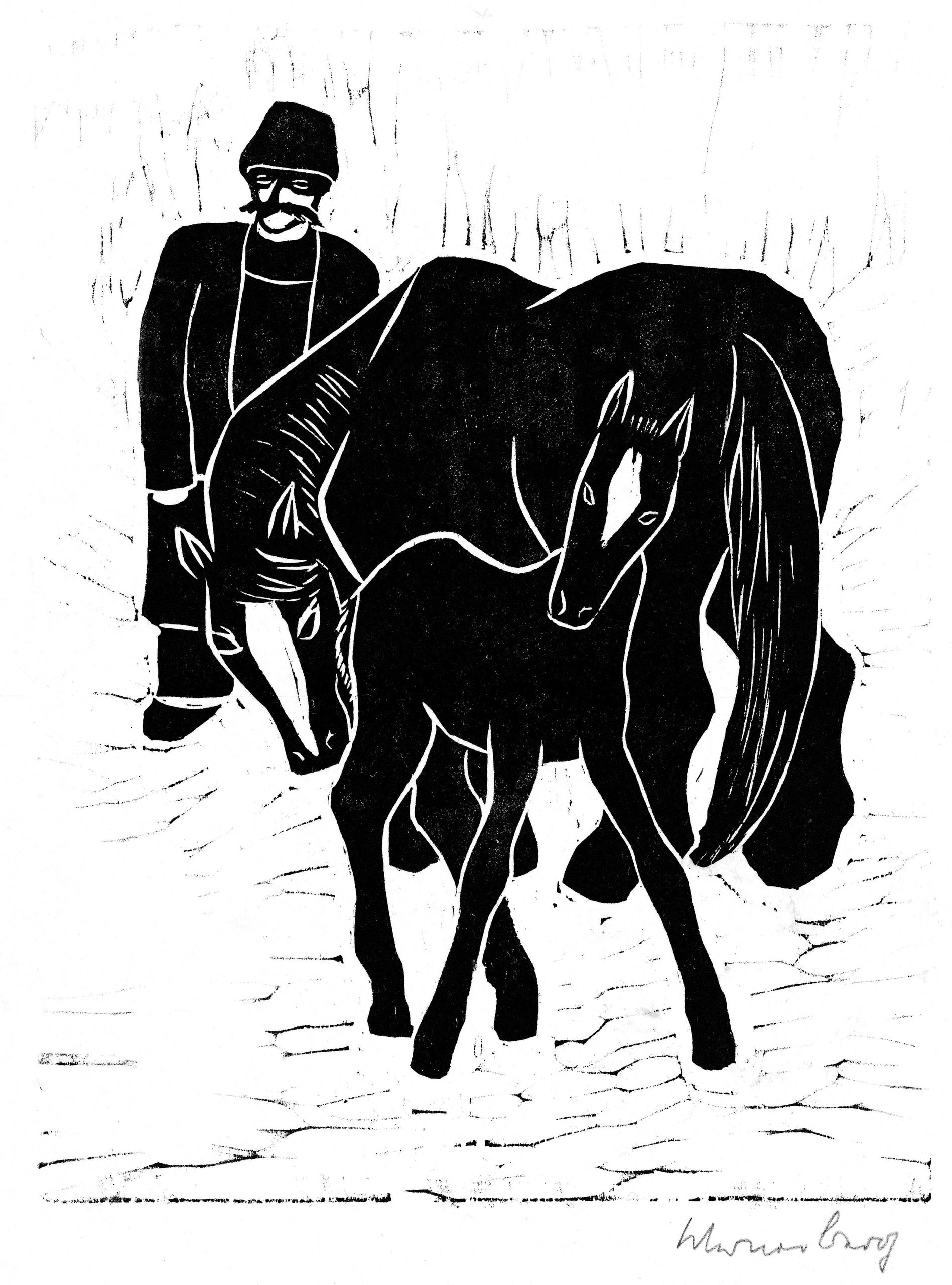Farmer, Mare, Foal

Devoted to achieving the greatest possible naivete in the sense of unprejudiced naturality, Werner Berg was filled with respect and wonder for the work of the painter and customs officer Henri Rosseau. It was less the artist’s fantastic jungle paintings that were of great significance to Werner Berg, but the carefree directness of his renderings of the lives of the “simple people” living in the Parisian suburbs. Berg was also able to reproduce the vividness of rural scenes in black surfaces with a natural immediacy. The figures, their postures and their interrelationships speak for themselves. Farmer, Mare, Foal is Berg’s successful attempt to allow the spatial figures’ arrangement in front of and behind one another other in real space to become a surface in the image. The spatial layering of the foal, the horse and the farmer is extremely complex, and yet the three seem to form a single black block. The solution of this problem is more than just formal: through the equal treatment of the human, the animal and the landscape as a whole, the bond between the rural man and his environment becomes visible.